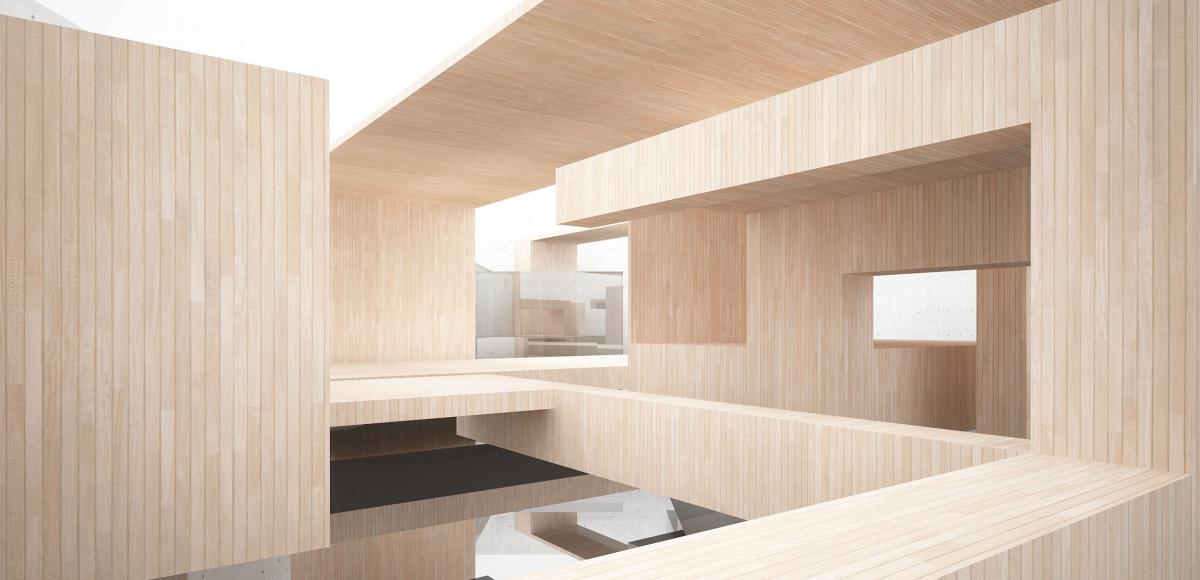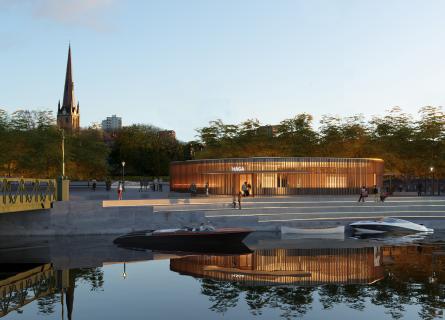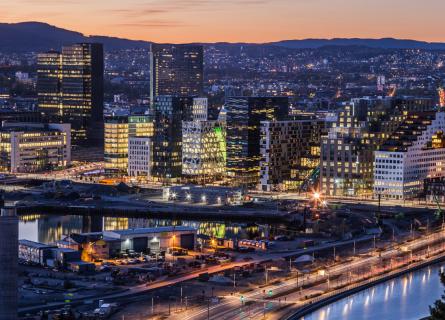
Into the wood
Building with wood has become increasingly popular, especially in recent years. In this sense, Helmut Spiehs, the Managing Director of Binderholz Bausysteme, may consider himself very fortunate. In this interview, he will reveal the key factors to the success of wood as a sustainable construction material, and the challenges that wood procurement will face in the future.
The construction industry is running out of sand for its concrete, and hardly a day goes by without a new wooden house being praised in the media for its sustainability. Wood as a building material has been declared to be the cure-all that will make the construction industry green. How realistic do you think this evaluation is?
This is not an evaluation, this is reality. The technical developments over the last 20 years have brought timber construction to an enormous level of marketability, so that there no longer exists any structural or economic reason not to build in wood.
The task now is to make modern and contemporary timber construction accessible to all consultants and builders involved in the implementation of a construction project through standardisation, systematisation, and knowledge transfer. A significantly higher share of solid wood construction within the building sector "automatically" leads to the greening of the construction industry.
How can wood, as a resource, contribute to making the construction industry more sustainable?
Wood is a renewable, ecological resource. Just this fact alone does not guarantee that the use of wood as a building material makes the construction industry more sustainable. It is better to use all of the wood raw material for long-lasting wood-based products rather than to burn parts of it for energy.
In addition, the use of mass timber products should be matched in a balanced design for manufacture and assembly process individually, but at the same time systematically, in each project. Only after being reused several times, should the wooden component be ecologically recycled at the end of its life cycle. The Binderholz group implements this process every day. From trees to high-end mass timber solutions according to the zero-waste principle.
The construction industry increasingly has to face the demands of networked digitalisation. Construction with Building Information Modelling (BIM), sensor-controlled component tracking or virtual reality are becoming standard procedures. How do you at Binderholz embed your natural products in the context of digital construction?
The use of BIM in the construction industry varies widely around the world. If our products or construction systems are used in a BIM-based project, we achieve all requirements in our structural engineering departments to professionally map all necessary processes.
With our Binderholz mass timber concept for affordable housing, called "b_ solution", we even go so far that every building is mapped down with each single detail in a digital twin. Material procurement, work preparation, production control, logistics, construction processes, etc. are derived directly from this digital twin. Thus, with b_solution, we have fully digitalised all the processes involved in the production and construction of a residential building. From planning and cost quotation to production and the digitally controlled and monitored construction site. This does not only achieve price advantages for customers, but also leads to an enormous improvement in quality assurance and a reduction in construction time.
In the current sustainability debate, you are in a comfortable position. Your business model is based on a renewable, sustainable raw material, and your products are a prime example of the circular economy. Where do you see your challenges in terms of sustainability?
Sustainable management is, and stays the top priority in European forestry, following the principle of not consuming more in the present than can be regrown in the future. Accordingly, the three basic functions of forest – utility, protection, and recreation – need to be and remain available also for next generations. In this context, utilisation is a very important fact to secure healthy forests, and sufficient timber for reaching the Sustainable Development Goals (SDGs) from the UNECE list.
Therefore, putting the forest out of use is the wrong way. This slows the growth and the health of the forest and reduces the speed of CO₂ storage. The “out of use position” has catastrophic effects, such as the forest fires in the Northwest region of the US, or in Russia.
In the future, we will face more climate challenges, hotter summers, which will lead to bark beetle infestations. This will have an impact on forest assets and changes in the allocation of wood species. What is Binderholz’s position in the forestry value chain and how will your wood procurement and wood mix/ species potentially change?
For the whole Binderholz group, softwood will stay in focus for production. We collaborate with different forest laboratories to research more resistant spruce, which is our most important wood species. However, a mixture of species in the forest is getting more important for us too. Mixing the forest with some deep roots species, such as fir, is just as important as growing some other sorts like douglas and/or pine. The latter are more resistant against droughts and stormy weather conditions.
In order to be able to guarantee sustainable forest management, we run our own forest service companies at Binderholz group. With their corporate slogan 'Together strong for the forest', TTW Waldpflege GmbH and Waldprofi GmbH provide a professional structure for managing all relevant forestry services. We offer solutions to forest owners for a profitable and sustainable forest cultivation in the highest execution quality.
We are concerned about strengthening regional corporate structures, and the deployment of local skilled personnel, as well as complying with all criteria to ensure sustainable forestry management.



